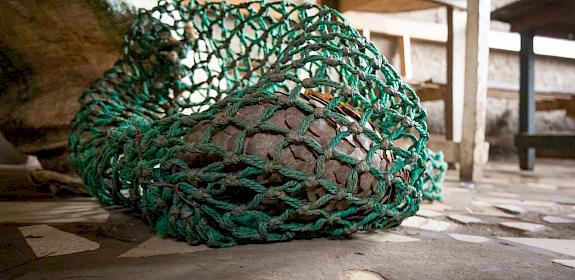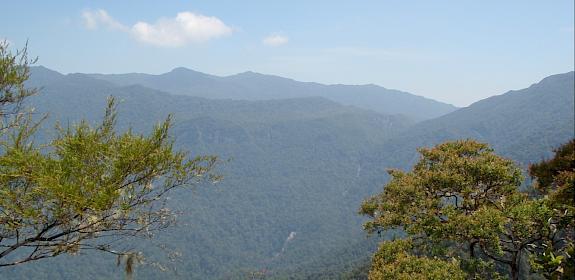
An Indian Pangolin Manis crassicaudata © Rajesh Kumar Mohapatra
i
On the road to extinction in the wild
Made to endure astounding levels of poaching and illegal trade, pangolins are another wildlife victim of insatiable consumer demand from various Asian nations.
There are eight species of pangolin, split evenly between Africa and Asia. They are shy, elusive and secretive mammals whose bodies are covered in hard, keratin scales. Recent years have seen an increase in the levels of national and international attention they are afforded but, given the legality of the pangolin market in China, reducing ingrained consumer demand is an ongoing conservation challenge. The vast majority of pangolins consumed in Asia are poached from Africa and all eight species are listed in Appendix I of CITES, prohibiting international trade.
23.5 tonnes
of pangolins and their parts were trafficked in 2021 alone.
159
different smuggling routes were used by pangolin traffickers between 2010 to 2015
China
and Viet Nam are the two primary consumer markets for pangolins
1,000,000
pangolins are estimated to have been poached in the last decade
related reports to PANGOLINS
Explore the latest publications, reports and papers from TRAFFIC related to pangolin conservation.
Visit our resource library for the full TRAFFIC publication archive.

China's Champions of Change
China's Champions of Change is a project launched in 2018 to support the Chinese Government in reducing the consumption of endangered species amongst consumers in China through the use of targeted behavioural change initiatives; with a focus on pangolin and rosewood products.

Wildlife TRAPS
Our USAID-funded Wildlife, Trafficking, Response, Assessment, and Priority Setting (Wildlife TRAPS) helps protect African elephants through the provision of training, tools and forensics support to enforcement agencies, trade monitoring and analysis, and policy advice to governments.
The Astounding Secret Pangolin
This short animation teaches children about the pangolin's one-of-a-kind features and behaviour, the threat of poachers in the forest, and the call for “someone bold and someone caring” to make the forest safe again.
why are pangolins poached?
As with many other wildlife species, the motivations behind consumption of pangolin products varies significantly between nations and social groups.
In Viet Nam, mainland China and Hong Kong, their scales are perceived to simultaneously cure hangovers, treat liver conditions and help new mothers breast feed. Pangolin meat is also viewed as a delicacy, and eaten by wealthy middle classes and corporate elites as a public display of wealth and status. It is undeniable that current demand for pangolin products far outweighs available supply. Consumer demand is driving highly damaging transnational criminal activity whose detrimental social and economic impacts go far beyond just wildlife conversation.
poached indiscriminately
Sunda Pangolin
The Sunda Pangolin Manis javanica is one of the four Asian species of pangolin.
It is currently listed as Critically Endangered and therefore considered to be facing an extremely high risk of extinction in the wild. If current levels of illegal trapping and trafficking are sustained without a concerted enforcement response, wild populations will likely disappear in a matter of years. Indonesia, one of the last strongholds of the Sunda Pangolin, currently loses up to 10,000 pangolins a year to illegal trade.
Sunda Pangolin Manis javanica © Michael Pitts
i
Temminck’s Ground Pangolin
Temminck’s Ground Pangolin Smutsia temminckii is the only pangolin species native to Zimbabwe and one of the four African species of pangolin.
Zimbabwe have historically taken a strong stance on pangolin trafficking, scaling up enforcement efforts to deter would-be traffickers and setting a good example for other African nations to follow. Despite this, Ground Pangolins continue to be trafficked in high numbers, with insufficient data as to the status of their populations in the wild. They are currently listed as Threatened by the IUCN Red List™.
Temminck’s Ground Pangolin Smutsia temminckii © Darren Pietersen / African Pangolin Working Group
i
Philippine Pangolin
The Philippine Pangolin Manis culionensis is endemic to Palawan in the south-west of the country, and five other islands adjacent to it.
Much like the seven other pangolin species, it is ruthlessly hunted and trafficked for local and international consumption of its meat and scales. Seizures of Philippine Pangolins in their native country rose significantly between 1999–2009, with an increase of over 600% for the period 2010–2012. It is currently listed as Endangered by the IUCN Red List™.
Philippine Pangolin Manis culionensis © Roger Dolorosa
i
The vast majority of international seizures concerning pangolins are of their scales.
Traffickers employ a wide array of tactics to dupe Customs officers, including labelling sacks as oyster shells, and can smuggle staggering volumes on a single shipment. A recent TRAFFIC report found that an average of 20 tonnes of scales are trafficked internationally each year, with the majority destined for China.
Pangolin scales seized by Malaysian authorities en route from Africa © TRAFFIC
i
A TRAFFIC report analysed global pangolin seizures between 2010 and 2015, revealing a total of 1,270 seizure incidents in 67 territories/countries.
The variety and volume of pangolin products being trafficked continues to reveal the shocking scale of international poaching and trafficking and the threats they pose to pangolin populations.







